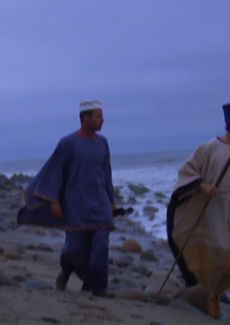On the Shelf at CCBC Libraries
-
Xerxes by The first full-scale account of a Persian king vilified by history Xerxes, Great King of the Persian Empire from 486-465 B.C., has gone down in history as an angry tyrant full of insane ambition. The stand of Leonidas and the 300 against his army at Thermopylae is a byword for courage, while the failure of Xerxes' expedition has overshadowed all the other achievements of his twenty-two-year reign. In this lively and comprehensive new biography, Richard Stoneman shows how Xerxes, despite sympathetic treatment by the contemporary Greek writers Aeschylus and Herodotus, had his reputation destroyed by later Greek writers and by the propaganda of Alexander the Great. Stoneman draws on the latest research in Achaemenid studies and archaeology to present the ruler from the Persian perspective. This illuminating volume does not whitewash Xerxes' failings but sets against them such triumphs as the architectural splendor of Persepolis and a consideration of Xerxes' religious commitments. What emerges is a nuanced portrait of a man who ruled a vast and multicultural empire which the Greek communities of the West saw as the antithesis of their own values.
Call Number: DS283 .S76 2015 -
A Global History of Architecture by From ancient Chinese civilization to the postmodern world Organized along a global timeline, A Global History of Architecture presents an innovative approach to the study of architectural history. Spanning from 3,500 B.C.E. to the present, this unique guide is written by an all-star team of architectural experts in their fields who emphasize the connections, contrasts, and influences of architectural movements throughout history. The architectural history of the world comes to life through a unified framework for interpreting and understanding architecture, supplemented by rich drawings from the renowned Frank Ching as well as brilliant photographs. Architecture and art history enthusiasts will find A Global History of Architecture perpetually at their fingertips.
Call Number: NA200.C493 2007 -
Persian fire : the first world empire and the battle for the West
Call Number: DS281 .H65 2005
Streaming Videos
-
Birth of a Nation: The Acquisitions and Achievements of the Achaemenid Empire At its height, the Achaemenid Empire of ancient Persia embraced all previous civilized states of the ancient Near East—a multinational empire without precedent. This program presents the history of the First Persian Empire, with particular attention paid to the historic architecture of the period’s major cities and palaces. Insights into the development of the region by rulers such as Cyrus the Great, Darius the Great, and Xerxes are offered. The ruins of royal residences are also emphasized, and explanations of the architecture and reliefs of palaces, including the Hall of Apadana and Taçara, provide a historical backdrop to the program. A part of the series Pre-Islamic Persia: The Forgotten Glory. (52 minutes)
-
The Persians The engineering and/or architectural feats that were characteristic of some of the greatest societies on this planet. The Persian Empire was one of the most mysterious civilizations in the ancient world. Persia became an empire under the Cyrus the Great.

Databases
-
World History This link opens in a new window
 Articles, essays, and primary sources on the history of the world.
Articles, essays, and primary sources on the history of the world. -
Academic Search Premier This link opens in a new window

Articles on any subject. This is a good place to start.
Online from CCBC Libraries
-
The Persian Empire by This well-balanced reference on ancient Persia demonstrates the region's contributions to the growth and development of human civilization from the 7th century BCE through the fall of the Persian Sasanian Empire in 651CE. Knowledge of ancient Persia is often gleaned from the writings of the ancient Greeks and Romans--two civilizations that viewed the Persians as enemies. This one-of-a-kind reference provides unbiased coverage of the cultural history of the Persian Empire, examining the Median, Achaemenid, Parthian, Kushan, and Sasanian dynasties and tracing the development and maturation of Iranian societies during a period of nearly 1,500 years. As one of the most comprehensive studies on the topic, this historical overview explores the region's rich past while providing insight into the cultures and civilizations the Persians came to rule and influence. Using primary sources written and inscribed by the ancient Persians themselves, the encyclopedia studies the pre-Islamic civilizations of Iran in the Middle East, the Caucasus, Central Asia, and the Indian subcontinent. Incorporating contributions from scholars who discuss the rise and fall of various Persian dynasties, the work offers some 180 entries that cover such topics as religion, royal nobility, the caste system, and political assassinations. The content offers perspectives from a variety of disciplines--from anthropology to archaeology, geography, and art history, among other areas. Provides coverage of major events in ancient Persian history from the formation of the Median empire in the 7th century BCE to 65 CE Includes photographs of various historical and archeological sites dating back to various periods of ancient Persian history
Publication Date: 2016-06-27 -
Homeland and Exile by This volume is a scholarly tribute to Bustenay Oded's distinguished career from some of the many contemporaries, colleagues, and former students who not only admire, and keep being inspired by his achievements, but who also count him as a friend. The title points to the remarkable span of Bustenay Oded 's research and research interests. Accordingly, the Festschrift's thirty original contributions deal with a wide range of topics, focusing on the Assyrian Empire, as well as on the Hebrew Bible and other cultural contents.
Publication Date: 2009-10-24 -
The Archaeology of Elam by
Publication Date: 1999


